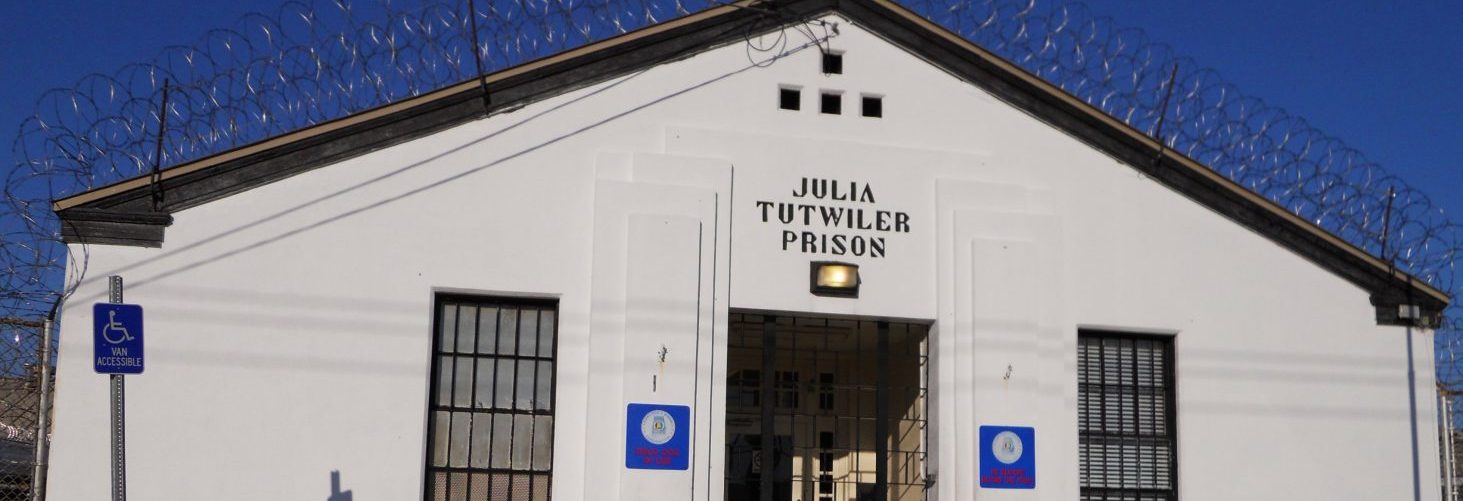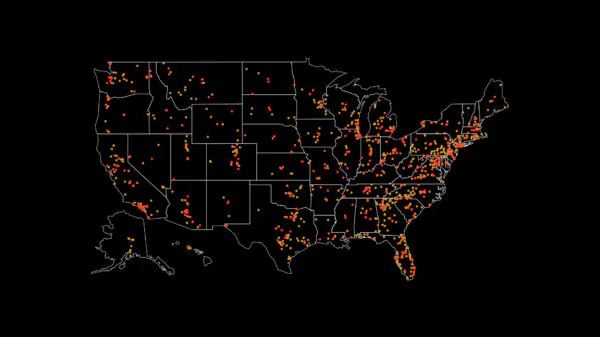By Chip Brownlee
Alabama Political Reporter
MONTGOMERY — A House prison construction plan in the works is expected to include the provisions that would allow for the construction of a new women’s prison and three regional men’s facilities at a cost of up to $845 million.
The revamped House plan will come as lawmakers stare down the end of the 2017 Legislative Session, set to close with only five legislative days to go and several priorities left unfinished. Lawmakers are making a final sprint to get a prison reform plan through.
The plan, dubbed the Alabama Prison Transformation Initiative, was conceived by the Alabama Department of Corrections as a brick-and-mortar solution to severe overcrowding in Alabama’s prisons.
“I know we have a lot of opponents here, and I respect them, but doing nothing is not an option,” said the bill’s sponsor, Sen. Cam Ward. “No one can tell me that the way we treat those prisoners is constitutional. Our dogs get better treatment than them.”
The House Judiciary Committee held a public hearing Tuesday on Ward’s Senate bill, which would authorize the construction of three new regional men’s prisons. Each would have a capacity of about 4,000 inmates a piece.
The Senate passed a compromise version of the bill in March, but the House committee and the full House still have to pass the plan. Lawmakers are working to revamp the proposal before it gets to the floor.
The revamped prison plan
The new plan would include the three “mega prisons” that were in the Senate version but would also add back in authorization for a new 1,200-bed women’s prison to replace the Julia Tutwiler Prison for Women. That portion of the plan was removed in the final Senate version. Some lawmakers now hope to add it back.
A local option, giving local and county authorities to take out bonds to construct the new prisons, was added in shortly before the Senate plan was passed in March. The local option stays in the House plan, allowing local public authorities to finance construction of three of the men’s regional prison facilities.
The facilities, financed and built by city or county bond authorities, would then be leased back to the state Department of Corrections for the term of the bond. The option was added to give counties like Escambia and Elmore, home to seven of 16 state correctional facilities, a chance to compete for the new regional prisons.
Most other existing state prisons would be closed once the three new men’s prisons are completed. ADOC’s initial proposal for the APTI would have consolidated 14 of Alabama’s 16 major correctional facilities into the four new prisons.
If localities choose not to go ahead with building the prisons or an agreement can’t be reached, an expected provision would allow ADOC to go ahead with building their own regional prisons by borrowing $215 million in revenue bonds for each men’s facility.
Most local authorities won’t be able to afford a $215 million bond to build a new prison that would meet the specs that ADOC will require, even if they want one. Elmore County, home to Elmore, Draper, Staton and Tutwiler correctional facilities, has an annual budget of $11 million.
Annual bond payments over thirty years for a single $215 million facility would be more than $7 million, which would take up more than half of Elmore’s budget. ADOC leasing payments would likely offset that cost.
Another $200 million in ADOC bonds would be used to build the new women’s facility to replace Tutwiler and renovate existing men’s facilities. The total bond is capped at $845 million.
Will the plan fix overcrowding, understaffing or anything at all?
Though the plan is an attempt to address overcrowding and systemic understaffing problems, it doesn’t completely alleviate them. The plan would reduce overcrowding from about 175 percent capacity to a little more than 125 percent capacity over the next five years — and only if all three prisons are built.
“We’re the most overcrowded system in the nation,” said ADOC Commissioner Jeff Dunn. “Staffing is going down. We are facing a looming class action court ruling that is going to be very significant for the state. My question is: Do we want Alabama to solve this problem, or do we want someone else to come in and tell us how to solve this problem?”
The plan doesn’t have any provisions for raising ADOC’s appropriations to hire new corrections officers or mental health staff, two issues that are the subject of lawsuits pending against the state prison system.
“To the extent that we can solve these problems ourselves, we ought to try to do that,” Dunn said.
Alabama’s prisons currently house about 23,000 inmates in a system built mostly in the 1970s for a max of 13,000 inmates, according to the most recent ADOC statistical reports.
The State prison population has decreased from about 27,000 after the Legislature passed sentencing reform measures in 2013. The addition new prison could alleviate the overcrowding problem over time, proponents have said.
“I don’t think we can sentencing reform ourselves down to 137 percent capacity,” Ward said, noting that most of the state’s prison population is being held on violent offenses.
The Federal Judiciary has shown increasing impatience with Alabama’s prison system. In recent years, conditions at Tutwiler Prison were so bad that a Federal court ruled them unconstitutional and ordered improvements. The US Department of Justice launched a larger investigation in 2015.
“The conditions in those prisons are not acceptable,” Ward said. “Show me the revenues that will finance just renovations and improvements.”
Opposition to the bill is fierce
Four opponents of the bill spoke at the public forum Tuesday, but many more were signed up. They took the plan to task on financing and mixed up priorities.
SPLC Legal Director Ronda Brownstein said the proposal would not solve the pressing legal issues of included in their lawsuits that are pending in federal court.
“If we had unlimited resources in Alabama, I would be all for this, but every dollar we spend on this takes money away from other things that we need to be doing,” Brownstein said. “We need to be hiring more corrections officers and mental health staff.”
Opponents of the bill said the plan was too focused on brick-and-mortar solutions rather than a more holistic approach that would include increased appropriations for ADOC and sentencing reform. A group opposing the bill, headed by Rep. Johnny Mac Morrow, D-Red Bay, are hoping to provide an alternative plan before the committee is expected to vote on the new plan next week.
They hope ADOC will consider working with county jails and sheriffs’ offices to move state prisoners to county jails to save money and give local economies a boost.
House Judiciary Committee Chairman Mike Jones, R-Andalusia, said he expects the proposal to be up for a vote in committee next week. It could be on the House floor by next Thursday.
It isn’t clear whether the proponents have the votes they need to pass the plan. APR tallies suggest the plan may have trouble getting out of committee.
If it even makes it out of the House, lawmakers would only have a few days to get the plan back up to the Senate, through conference committee and passed there again. That might be a tight squeeze with only five legislative days left.
Opponents have asked Gov. Kay Ivey to call a special session to address prison construction.
“If you see something this big coming down in the last two weeks, you better hold on. They’re trying to slide it past you,” said Rep. Allen Farley, R-Bessemer. “We need to finally get this right.”
Brick-and-mortar solutions for $800 million. Are there savings?
By consolidating the prisons into three mega-facilities, the State could save $47 million a year — enough to finance the bond payments — and wouldn’t need as many guards, ADOC officials have said.
The plan would be financed through revenue bonds, which could only be used for capital investment such as building new facilities and renovating existing ones. The revenue bonds could not be used for hiring new staff or stocking the prisons with new health equipment.
“We’re going to keep pushing this because I believe this is the foundational issue that prevents us from going forward in medical, mental health, education, treatment and vocational education,” Dunn said. “Those are all limited because of the infrastructure. If we attack the infrastructure, it doesn’t automatically solve those problems, but it creates the foundation on which we can solve those problems.
But paying back the revenue bonds would take up a chunk of ADOC’s appropriations, limiting their resources available for other uses. ADOC officials say they will save enough from consolidation to finance the bonds without affecting existing appropriations.
That idea all depends on if the savings actually happen. The Alabama Law Enforcement Agency was formed in 2015 out of the consolidation of three state law enforcement agencies and nine divisions. That consolidation was expected to save more than $250 million over a decade, but those savings haven’t been actualized. ALEA requested a $60 million budget increase in January after a 30 percent drop in state troopers on the highways since 2009.
“ADOC has never explained how they will get $47 million in savings from the new prisons,” Brownstein said. “This whole idea of cost savings is absolutely false.”
The savings projection has been confirmed by the Legislative Fiscal Office, the Department of Finance and the National Institute of Corrections, but that’s not sure-fire.
“They agree with us that we can make those savings,” Dunn said.
ADOC has said the consolidation using the “mega prisons” would reduce staffing costs by about $17 million a year, overtime payments by $21 million a year and healthcare delivery by $10 million, according to the two independent studies the department commissioned.
Email Chip Brownlee at [email protected] or follow him on Twitter.























































